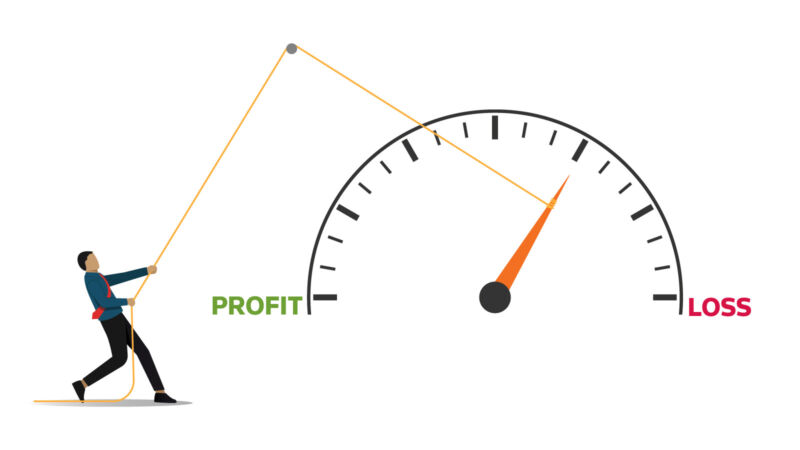Those tasked with law firm management currently find themselves in a more tenuous financial landscape than existed just one year ago
The high bar set by the law firm industry’s extraordinary performance in 2021, together with several external factors, has made the first half of 2022 challenging for the industry. Recent reports indicate that overall demand for legal services continues to decline, while firm expenses have increased by double digits from the first to second quarters of 2022. The current setting has led to a 3.6% decline in profits per lawyer, quarter over quarter.
Inflation, the continued war for talent, return-to-office strategy implementation, as well as the declining demand for corporate and mergers & acquisitions (M&A) legal services, led to a second consecutive quarter of profit decline. Reduction in profit margin also comes while billing rates continue to climb industry wide. While firms had enjoyed nearly two years of continued quarterly profit increases, the declining trend identified in the first half of 2022 serves as an ominous warning of future liquidity issues if margins continue to decline.
The Thomson Reuters Institute reported that, in the second quarter of 2022, overall average industry demand fell by 0.5% in comparison to the second quarter of 2021. Corporate demand fell by 0.7% and M&A fell by 4.9% over the same period, although it should be stated the 2021 figures correlate to a period of unmatched demand after firms and clients adjusted to the pandemic-related legal atmosphere.
While demand has receded through the first half of 2022, billing rates have increased approximately 5.8%. This may appear to be a sizable increase but is less than those in prior years of 5.9% in 2020 and 6.7% in 2021
The war for talent continues to drive compensation expense upwards, as it increased 12.4% in the second quarter, year over year, according to the Thomson Reuters Institute. Lawyer head counts increased 4.5% during the first half of 2022, which correlates to the increase in hiring made in 2021. Operating expenses also increased by 13.5% year over year, fueled mostly by increases in technology spending, rising costs due to inflation and costs related to returning a workforce to the office, as many legal professionals were still operating mostly in a work-from-home environment in the first half of 2021. It should also be noted that many of these operating expenses were initially implemented in the second half of 2021, and as a result, one expects to see a more gradual increase in operating expenses in the second half of 2022.
Revenue growth of 5% during the first half of 2022 is more in line with historical first-half figures, and 2021’s first-half growth of 14.6% is now seen as an outlier that’s tied to the industry’s resurgence after a period of pandemic-related dormancy. Another variable that appears to have curbed revenue growth in the first half of 2022 is a 4.2% lengthening of the collection cycle. Firms are servicing clients who are taking longer to pay their bills. Receivables continue to age, and the legal industry has seen an almost 10% increase in receivables outstanding since the beginning of 2022.
Inflation as a factor
US inflation roared to a four-decade high at the end of June, as the consumer price index rose approximately 9% from a year earlier. If inflation remains at current levels, law firm billing rates won’t be able to keep pace. While demand has receded through the first half of 2022, billing rates have increased approximately 5.8%. This may appear to be a sizable increase but is less than those in prior years of 5.9% in 2020 and 6.7% in 2021. Firm leaders may have wanted to implement additional fee raises midyear, but many opted against adjusting fees in light of decreasing legal demand industry wide. Also, billing rates have historically been about two points higher than inflation for the past decade.
Firms that opted against midyear billing increases may be facing quite the uphill climb as they attempt to make up for their eroded gross profit margins during the first half of 2022. It is not guaranteed that inflation will continue its current torrid pace; in fact, multiple projections suggest inflation will decrease in the next 12 months. Either way, the industry can expect to deal with inflation-related fallout for the immediate future.
As the industry enters the third quarter, market conditions remain challenging. However, rising accounts receivable balances at the end of the first half should aid in increased revenue if firms can efficiently prioritize collections prior to year-end. It is also expected that expense growth should diminish in the second half of 2022 as the lawyer head-count boom spurred on by the rush of post-pandemic-related demand finds its market-driven equilibrium.
While technology expenses have increased drastically in 2022 (approximately 10.5%), this is one area where firms should be hesitant to reduce costs. Such expenses should instead be viewed as infrastructure investments, as new technology allowed firms to pivot to the remote-work environment during the pandemic, while also driving firm efficiency improvements through cybersecurity and cloud computing, among other processes. Firms that properly invested in new technology can expect to see improved realization efficiencies through the continued implementation of data analytics. Such investments will also give firms the ability to reach a new client base and explore emerging practice areas through streamlined data intake and initial analysis.
As firms continue to compete for new business in an increasingly competitive marketplace, technology will be at the center of improving the client-driven experience by increasing the perceived value of the clients’ legal services. As more routine procedures are automated, professionals can spend more hands-on time with clients, working through more high-value processes.
For many firms, it is likely that 2022 profits will be lower than 2021. However, a reduction to the continued growth of expenses, and the potential for increased revenues if a concerted effort is made to increase collections on outstanding balances should result in the second half of 2022 being more profitable than the first half.







